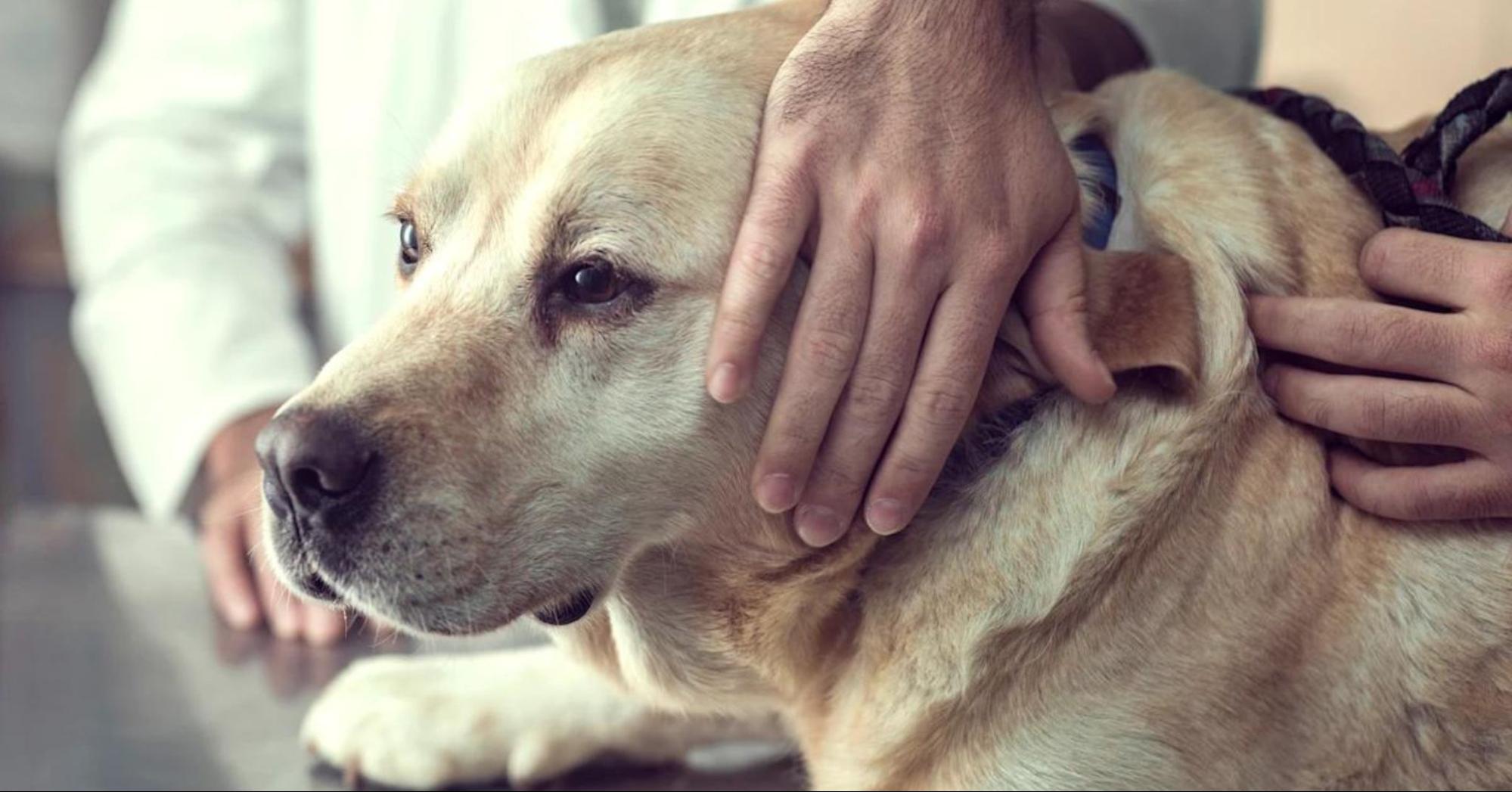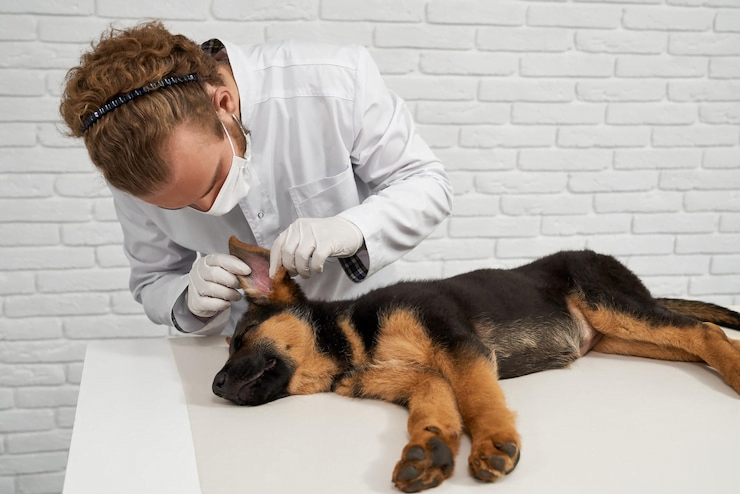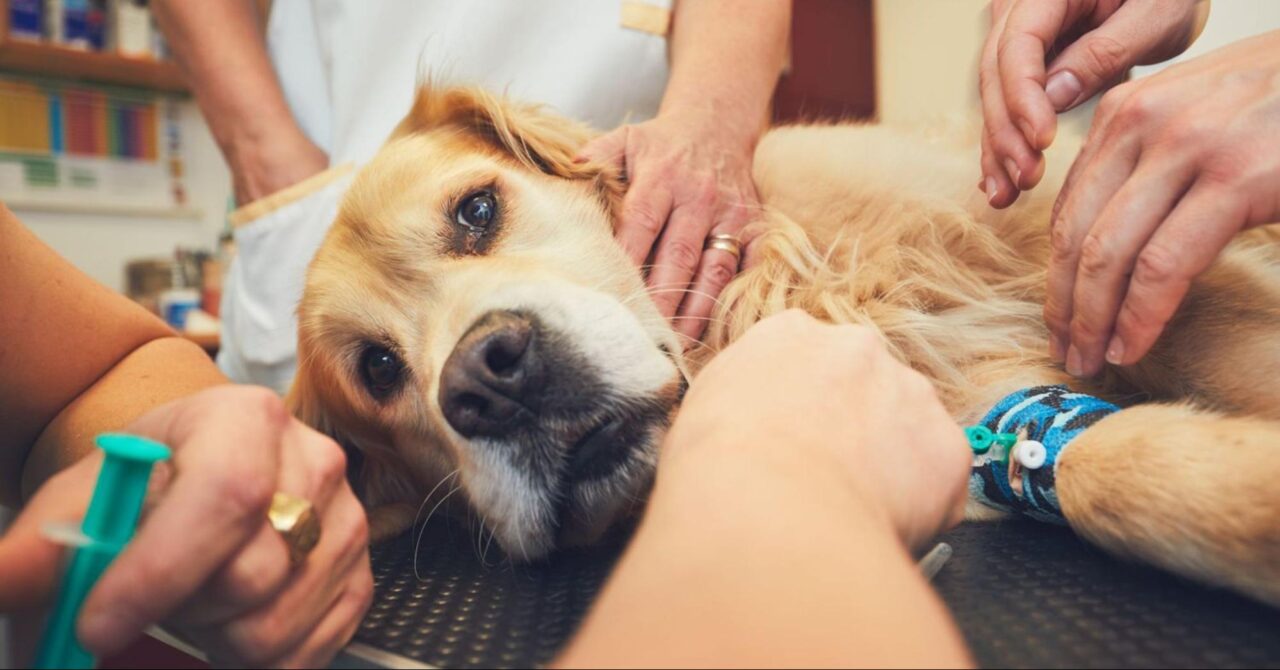Deciding when to euthanize a dog with cancer is a deeply personal decision that depends on assessing their quality of life. Signs of pain, such as loss of appetite, rapid weight loss, and difficulty breathing, indicate a decline. Common cancers, including bone cancer, liver cancer, and mast cell tumors, often cause persistent pain that may not be manageable even with pain medication.
When a dog’s daily activities and energy levels are significantly impaired, and clinical signs like internal bleeding or neurological issues appear, it might be time to consider humane euthanasia. Consulting with a veterinarian about palliative care and the stages of cancer can provide guidance.
Ultimately, the decision should be based on whether the dog’s quality of life has deteriorated to a point where continuing treatment is more harmful than helpful. Facing this difficult time with informed decisions can help ensure the kindest option for your beloved pet.
When To Euthanize A Dog With Cancer
Deciding to euthanize a beloved pet with cancer is a deeply personal and difficult one. There is no single “perfect time,” and the best course of action will vary depending on your dog’s circumstances.
However, some common signs that the quality of life may be declining significantly include Loss of appetite, rapid weight loss, persistent pain unresponsive to medication, difficulty breathing, or internal bleeding.
If your dog is no longer able to participate in their favorite activities and experiences significant discomfort, veterinary professionals can guide you through the euthanasia process, ensuring a peaceful and painless passing. Remember, prioritizing your dog’s comfort and well-being is the ultimate act of love.
How Long Should I Let My Dog Live With Cancer?
Cancer in dogs is a challenging and emotional experience for both pet owners and their furry companions. As a responsible pet parent, it’s essential to consider your dog’s quality of life when dealing with cancer.
Learn about the compassionate options and necessary steps to humanely euthanize a dog with cancer, ensuring their comfort and dignity. While there’s no one-size-fits-all answer, here are some important factors to consider:
- Stage and Type of Cancer: The prognosis varies based on the type of cancer and its stage. Some cancers progress rapidly, while others may progress more slowly. For instance: Dogs with low-grade oral melanoma (stages 1 through 3) can live more than 18 months with treatment. High-grade melanoma (stage 4) typically gives dogs less than three months.
- Signs of Pain and Decline: Pay attention to clinical signs such as loss of appetite, rapid weight loss, and difficulty breathing. Persistent pain, internal bleeding, and swelling of lymph nodes are also concerning. If your dog’s daily activities become challenging, it’s time to evaluate their quality of life.
- Palliative Care and Hospice: Consider palliative care to manage pain and improve comfort. This may involve pain medications, supportive care, and adjustments to daily routines. Hospice care focuses on maintaining quality of life during the late stages of cancer.
- Euthanasia: Deciding on euthanasia is deeply personal. If your dog’s suffering outweighs their enjoyment of life, humane euthanasia may be the kindest option. Consult your veterinarian to discuss the best timing.
- Natural Death: Some pet owners prefer to let their dogs pass away naturally. However, be prepared for the possibility of a painful death. It’s essential to balance compassion with the reality of your dog’s condition.
Remember that every dog is unique, and there’s no perfect time to say goodbye. Trust your instincts, seek veterinary guidance, and prioritize your dog’s well-being during this difficult journey
What Does Euthanasia Look Like?
Euthanasia is a humane and compassionate option for dogs with advanced cancer when their quality of life has significantly declined. During the euthanasia process, a veterinarian administers a sedative to relax the dog, followed by a medication that gently stops the heart. This procedure is painless and quick, ensuring that the dog experiences no distress.
Signs of pain such as loss of appetite, rapid weight loss, and difficulty breathing often signal that it might be time to consider this option. Palliative care and hospice support are crucial during this difficult time, helping manage symptoms like internal bleeding and neurological issues. It’s a personal decision, often made when a dog with cancer, such as bone cancer or liver cancer, shows persistent pain and can no longer enjoy daily activities. Euthanasia is the kindest option when the dog’s quality of life is outweighed by their suffering, ensuring a peaceful and dignified end.
How Do I Know If My Dog With Cancer Is Suffering?
Recognizing whether your dog with cancer is suffering is crucial for their well-being. While each case is unique, here are some common signs to watch for:
- Unexplained Lumps and Bumps: If you notice any unusual growths or lumps on your dog’s body, it’s essential to investigate further. Some tumors may be benign, but others could be malignant. Regularly examine your pet during petting sessions or grooming routines.
- Sores or Open Wounds That Don’t Heal: Persistent sores or wounds that fail to heal can be indicative of underlying health issues, including cancer. Pay attention to any changes in your dog’s skin or coat.
- Weight Loss or Loss of Appetite: Sudden unexplained weight loss or a decline in appetite may signal an underlying health problem. Cancer can affect metabolism and lead to weight changes.
- Lameness and Difficulty Walking: Bone cancer (such as osteosarcoma) can cause lameness and pain. If your dog limps or has difficulty walking, consult your veterinarian.
- Abnormal Bleeding: Any unexplained bleeding, whether from the mouth, nose, or other areas, warrants attention. Melanomas, for example, can cause darkly pigmented sores and bleeding.
- Breathing Difficulties: If your dog experiences difficulty breathing, it could be related to cancer affecting the respiratory system. Seek veterinary advice promptly.
- Behavioral Changes: Watch for changes in your dog’s behavior, energy levels, and engagement in daily activities. A noticeable decline in quality of life may indicate suffering.
Remember that assessing your dog’s well-being involves both objective signs and your intuition as a pet owner. Consult your veterinarian to make informed decisions about your dog’s care, including humane euthanasia if necessary.
How Do I Make My Dog Comfortable When Dying Of Cancer?
Watching a beloved dog battle cancer is incredibly difficult. While there’s no cure-all, you can significantly improve their comfort during this time. Focus on pain management with medication prescribed by your veterinarian. Create a soft, warm bed and offer easily digestible food and water.
Maintain a calm and loving environment, allowing them to rest as needed. Short walks or gentle playtime in familiar surroundings, if they’re up for it, can also provide comfort. Prioritize their quality of life – if they seem to be suffering, discuss end-of-life options with your vet. Remember, you’re not alone – veterinary professionals and pet hospice care services can offer guidance and support.
Can Dogs With Cancer Have Good Days And Bad Days?
Dogs with cancer can indeed have good days and bad days. Despite the decline in quality of life often associated with bone cancer, liver cancer, and other types of cancer, there are moments when they seem to regain some normalcy. On good days, dogs with cancer might exhibit fewer signs of pain, show interest in their favorite activities, and have a better appetite.
However, during difficult times, symptoms like rapid weight loss, difficulty breathing, and persistent pain can dominate. Managing these fluctuations involves palliative care, supportive care, and pain medication to improve their quality of life. Recognizing these clinical signs and providing appropriate life care is crucial.
Decisions about pet euthanasia are highly personal and often hinge on observing these good and bad days, weighing the dog’s overall comfort and well-being. Consulting with veterinary medicine professionals can help make informed decisions during this difficult time.
When Your Dog’s Quality Of Life Declines
When your dog’s quality of life declines due to cancer, it can be a heartbreaking reality. Common signs of this decline include loss of appetite, rapid weight loss, difficulty breathing, and persistent pain, especially in aggressive cancers like bone cancer and liver cancer. At this stage, palliative care and supportive care become essential to manage pain and provide comfort.
Veterinary medicine professionals can help with pain medication and hospice care, allowing for an informed decision about humane euthanasia. It’s a deeply personal decision often made when the dog shows obvious signs of suffering and can no longer enjoy daily activities.
The decline in quality of life is marked by clinical signs such as internal bleeding, fluid buildup, and reduced energy levels. During this difficult time, understanding the progression and extent of the disease helps in making compassionate choices for your beloved pet.
When To Humanely Euthanize A Dog With Cancer
Deciding when to euthanize a dog with cancer is an emotional and challenging process. As a pet parent, you want to ensure your furry companion’s well-being while minimizing suffering. Here are some considerations:

- Unmanageable Physical Pain: If your dog experiences unbearable pain due to cancer, despite pain medication, it may be time to consider humane euthanasia. Signs of pain include restlessness, difficulty moving, and vocalization.
- Unremovable Tumor: Some tumors are inoperable or continue to grow despite treatment. If your dog’s tumor cannot be removed or managed effectively, their quality of life may decline significantly.
- Continuous Decline in Quality of Life: Watch for signs such as lethargy, incontinence, refusal to eat, or difficulty breathing. These indicate a decline in your pet’s overall well-being.
- Personal Decision: As a pet owner, you’re the best advocate for your dog. Consider their comfort, happiness, and ability to engage in daily activities. Trust your instincts and make an informed decision.
Remember that saying goodbye is never easy, but prioritizing your dog’s quality of life is an act of love and compassion.
Where is The Cancer?
When asking “Where is the cancer?” in dogs, it’s crucial to identify the type and location to manage their quality of life. Dogs with cancer can suffer from various types, including bone cancer, liver cancer, bladder cancer, and mammary gland tumors. Each type presents different signs of pain and clinical signs.
Cancer cells can spread to lymph nodes, causing a decline in quality of life with symptoms like loss of appetite, rapid weight loss, and difficulty breathing. During this difficult time, life care options such as palliative care and pain medication are vital. Veterinary medicine professionals can help determine the extent of the disease, whether it’s internal tumors or oral tumors, and guide decisions about humane euthanasia.
Recognizing the warning signs and stages of cancer helps in making informed, compassionate choices, and balancing pain control, and supportive care during the late stages of the disease.
What is Hemangiosarcoma in Dogs?
Hemangiosarcoma in Dogs is a highly invasive cancer that originates from blood vessel cells. This aggressive cancer can affect various organs, most commonly the spleen, heart, liver, or skin. Here are some key points about hemangiosarcoma:
- Blood Vessel Involvement: Hemangiosarcoma causes blood vessels to branch, fragment, become leaky, and eventually rupture. It’s responsible for approximately two-thirds of heart and splenic tumors.
- Silent Killer: Often referred to as a “silent killer,” dogs with hemangiosarcoma may show no symptoms until the tumor has grown large enough to rupture and spread. By that time, it’s often too late to save the dog’s life.
- Subtle Signs: Clinical signs can be recurrent but subtle. Dogs may experience weakness, fatigue, loss of appetite, and pale gums. Some dogs collapse suddenly due to internal bleeding from a ruptured tumor.
- Metastasis: Hemangiosarcoma frequently metastasizes to other organs, including the liver, lungs, lymph nodes, and bones. Skin hemangiosarcoma is less common but also occurs.
- Genetic Component: While the exact cause is unknown, there may be a genetic component. Certain breeds are more susceptible.
Early detection and prompt veterinary evaluation are crucial. Unfortunately, by the time symptoms appear, the disease has often progressed significantly. Owners facing this heartbreaking reality must make informed decisions about their dog’s care, including the kindest option for their beloved pet.
How Can a Hemangiosarcoma Impact a Dog’s Quality Of Life?
Hemangiosarcoma can significantly impact a dog’s quality of life. This aggressive cancer often leads to internal bleeding and rapid weight loss, contributing to a decline in quality of life. Common signs include loss of appetite, difficulty breathing, and persistent pain.
As the disease progresses, dogs may experience a noticeable decline in energy levels, impacting their daily activities. Veterinary medicine professionals can provide pain management and palliative care to help manage symptoms, but the prognosis is often poor.
Making informed decisions about life care, including potential humane euthanasia, is crucial during these difficult times. Hemangiosarcoma in dogs frequently leads to advanced disease stages, necessitating supportive care and hospice care. Recognizing the signs and understanding the disease progression helps in making compassionate choices for pets facing this heartbreaking reality.
How Do You Know When It’s Time?
Making decisions about a beloved pet’s end-of-life care can be incredibly difficult. When dealing with cancer in dogs, especially in its late stages, it’s essential to consider the quality of life your furry friend is experiencing. Here are some signs to watch for:
- Loss of Appetite and Rapid Weight Loss: A decline in appetite and unexplained weight loss can indicate pain or discomfort.
- Difficulty Breathing: Dogs with lung or heart tumors may struggle to breathe.
- Internal Bleeding: Look for signs like pale gums, weakness, or blood in the urine or stool.
- Lymph Nodes: Swollen lymph nodes may suggest cancer has spread.
- Decline in Daily Activities: If your dog can no longer enjoy favorite activities, it’s a sign of suffering.
- Pain: Persistent pain, even with pain medication, can impact their quality of life.
- Neurological Issues: Seizures, stumbling, or paralysis may occur.
- Abdominal Pain: Tumors in the abdomen can cause discomfort.
- Urinary Obstruction: Difficulty urinating due to tumors can be distressing.
- Breathing Difficulties: Dogs with lung or heart tumors may struggle to breathe.
As a pet owner, you’ll face difficult decisions. Consult with your veterinarian about palliative care, hospice care, and humane euthanasia. Consider the type of cancer, its aggressiveness, and the overall prognosis. Remember, it’s a personal decision, and the kindest option is to prioritize your pet’s well-being. Seek support from articles, grief counseling, and trusted health systems during this heartbreaking time. !Featured Image
Conclusion
Deciding when to euthanize a dog with cancer is a heart-wrenching process that requires careful consideration of the pet’s quality of life. Observing signs like loss of appetite, rapid weight loss, persistent pain, difficulty breathing, and a noticeable decline in daily activities are crucial indicators. Consulting with veterinary medicine professionals can help manage symptoms through pain medication and supportive care, offering some relief.
However, the progression of advanced diseases like hemangiosarcoma often leads to difficult decisions about humane euthanasia. Recognizing the stages of cancer and the extent of disease progression allows for informed, compassionate choices, ensuring the pet’s comfort during their final days.
Understanding the emotional toll and preparing for the inevitable loss with anticipatory grief counseling can aid in coping with this devastating news. Ultimately, making the kindest decision for a beloved pet is a deeply personal choice, guided by love and the desire to prevent further suffering.













